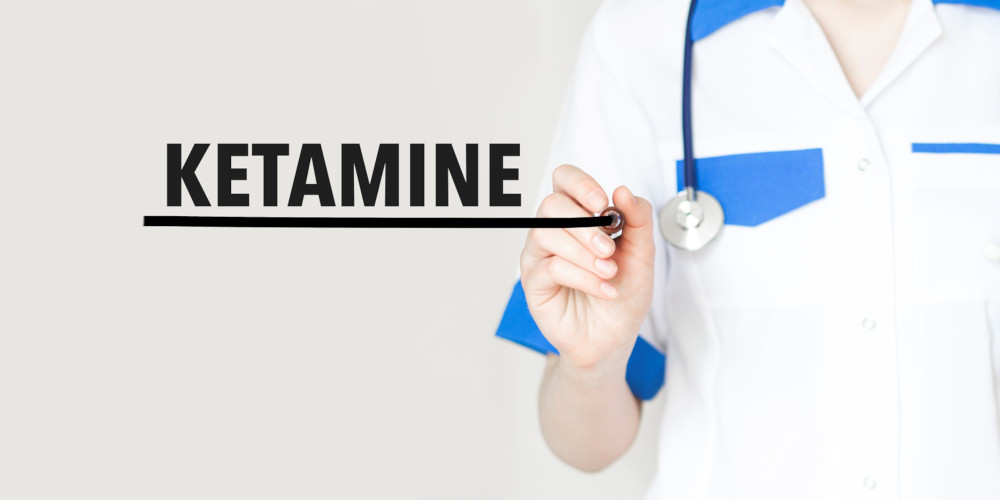Ketamine has somehow slipped into modern drug culture wearing a soft mask. It’s treated like the harmless one, the gentle one, the peaceful one, the drug that doesn’t wreck your life, doesn’t make you aggressive, doesn’t turn you violent, doesn’t create chaos. People call it “chilled,” “relaxing,” “safe,” or “just a vibe.” It gets passed around at festivals, used at afterparties, whispered about during nights out as if it’s a harmless accessory rather than a drug that alters your mind in a way most people do not understand.
But ketamine is not a mild drug. It does not sit politely in the corner of your brain while you float around feeling dreamy and philosophical. It disconnects you from your emotions, distorts your perception of reality, numbs your body, erases natural instincts, and slowly trains your brain to detach rather than cope. Ketamine doesn’t destroy you loudly like meth or violently like cocaine. It destroys you quietly, through disconnection, dissociation, memory deterioration, emotional flattening, and a gradual retreat from real life.
Families often don’t notice ketamine addiction until the person they love is already emotionally absent. And users don’t see the damage because ketamine’s effects feel peaceful. They feel like relief. They feel like a break from the overwhelming world. Nobody warns you that the escape becomes the cage.
This article dives into the truth behind ketamine addiction, not the memes, not the festival culture, not the aesthetic rebranding. The truth. The human truth families see too late.
How Ketamine Became the “Good Vibes” Drug
Ketamine’s rise in nightlife didn’t happen because people wanted a dangerous substance. It happened because the drug made them feel like they’d found the softest landing in a hard world. There’s no violent high, no frantic behaviour, no dramatic meltdown. People don’t look out of control. They look inward, quiet, content, maybe even spiritual.
This is the deception.
People mistake peaceful behaviour for safety.
They think the absence of chaos means the absence of danger. They assume calm equals control. Ketamine is marketed socially as the opposite of destructive, a way to relax, detach, and “float.” But families watching from the outside see something very different. They see someone slipping away from reality, becoming less emotionally available, less present, less motivated, less connected.
Ketamine doesn’t make people peaceful.
It makes them distant.
And distance becomes a habit that eats away at everything else.
Why Ketamine Pulls People In So Quietly
Ketamine doesn’t seduce with euphoria. It seduces with absence. The first use often feels like someone has turned the volume down on life. All the stress, noise, overwhelm, anxiety, pressure, guilt, and emotional heaviness fades. Problems don’t feel urgent. Responsibilities don’t feel heavy. Thoughts slow into something manageable. The world becomes softer and safer.
For someone living with anxiety, trauma, pressure, or emotional overload, this silence feels like a miracle. It feels like rest. It feels like the inside of their mind finally stopped screaming. This is the danger, ketamine’s appeal is functional. It works. It gives people exactly what they were craving, not pleasure, but escape.
When escape becomes easy, the brain starts wanting it again. Not in a dramatic, desperate way, but in a “why not?” way. The line between relief and reliance blurs without the user even noticing the shift. Ketamine becomes the emotional pause button, and eventually, the person can’t pause themselves without it.
Dependency doesn’t start with cravings.
It starts with comfort.
The K-Hole, Not a Rite of Passage
People joke about falling into a K-hole, as if it’s some quirky experience or rite of passage. But there is nothing funny or harmless about dissociating so deeply that your mind disconnects from your body. A K-hole is not a vibe. It is a neurological event. Inside a K-hole, a person may lose the ability to move, speak, or understand what is happening around them. They may have hallucinations, panic internally, or feel separated from their physical body. To everyone else in the room, they look calm or frozen. Internally, it can be terrifying.
But because ketamine produces physical stillness, bystanders often underestimate what’s happening. A K-hole is the brain shutting down external awareness. It is dissociation at its maximum setting. And once the brain learns dissociation, it begins reaching for it more easily. It becomes an escape from discomfort, conflict, or difficult emotions. A coping mechanism that isn’t a skill, but a shutdown.
People don’t notice how dangerous that is until they begin dissociating in everyday life, not just during ketamine use.
The Slow Erosion of Memory and Focus
One of ketamine’s most devastating effects is on the hippocampus, the part of the brain responsible for memory, learning, and emotional processing. Chronic use weakens this region, often leaving people with patchy memory, difficulty recalling conversations, and trouble focusing or completing tasks.
Families notice this before the user does. They notice the confusion, the short-term memory lapses, the dazed expression, the mental fog that lingers for days. The user often laughs it off, says they’re “just tired,” or blames stress. But the fog doesn’t go away, it expands.
People forget plans.
Forget conversations.
Forget commitments.
Forget basic details.
This isn’t absentmindedness.
It’s cognitive decline.
Ketamine doesn’t just make people forget nights out. It makes them forget pieces of their own life.
The Emotional Numbing That Feels Like Calm
Ketamine users often describe themselves as “chilled.” But loved ones see something much more concerning, emotional flattening. Joy doesn’t look as bright. Sadness doesn’t look as deep. Motivation fades. Empathy weakens. Human connection becomes less meaningful. Life starts feeling like it’s happening behind a glass window. Ketamine doesn’t relax people. It dulls them.
This emotional numbness becomes addictive because feeling nothing feels easier than feeling overwhelmed. People start reaching for ketamine not to get high, but to avoid emotional reality. Relationships begin to suffer because the user becomes less responsive, less attentive, less engaged. Partners describe feeling invisible or disconnected. Families describe the person as “not really here.” Ketamine doesn’t make life better. It makes life feel far away.
When Someone Is There But No Longer Present
One of the hardest parts of ketamine addiction for families is the sense of losing the person emotionally, not physically. The person still shows up. They still speak. They still exist in the same space. But something feels missing. Their eyes drift. Their presence feels thin. They struggle to stay engaged in conversations. They zone out mid-sentence. They become vague, slow, distant.
People describe their loved one as being “half here and half somewhere else.” That’s exactly what ketamine does, it pulls the mind outward, away from the present moment, into a dissociated state that feels safer than facing the real world. This disappearance doesn’t happen overnight. It creeps in quietly, until one day the family realises the person they’re speaking to feels like a hologram of who they used to be.
The Hidden Physical Cost
Ketamine doesn’t just affect the mind, it damages the body in ways people rarely discuss. Chronic use can cause severe bladder inflammation, ulcers, and even permanent damage that forces people to urinate constantly, experience extreme pain, or undergo surgery to repair a bladder that no longer functions.
Many users have no idea this risk exists until they’re already experiencing symptoms. By then, stopping is not always enough. The damage can be permanent. This is not the kind of risk people associate with a so-called “chilled” drug. But ketamine does not care about the aesthetic around it. It acts on the body regardless of how fashionable it seems socially.
Why Ketamine Addiction Is So Hard to Recognise
Ketamine addiction doesn’t look like chaos. There are no dramatic outbursts. No violent behaviour. No frantic highs. No obvious withdrawal scenes. Ketamine addiction looks calm, quiet, and manageable from the outside. That’s what makes it so dangerous.
People function on the surface while deteriorating internally. They still go to work. They still socialise. They still appear “fine.” Meanwhile, their brain is slipping further into dissociation. Families don’t see red flags, they see a muted version of their loved one and assume it’s just stress. Users don’t recognise their own addiction because ketamine makes them feel peaceful, not destructive. It feels like control. It feels like gentleness. It feels like a break, until it becomes the only way they know how to cope.
When Numbness Becomes Necessity
Ketamine addiction rarely looks like desperation. It looks like routine. A little after work. A little on weekends. A little to relax before bed. A little during a tough week. A little during an argument. A little because the mind feels noisy. A little because life feels heavy. A little because boredom feels uncomfortable.
People begin using ketamine not because they want more, but because they want less. Less noise. Less stress. Less overwhelm. Less emotion. The dependency isn’t on pleasure. It’s on absence. And absence is a terrifying thing to become dependent on.
Reconnecting the Brain, Reconnecting the Self
Recovery from ketamine addiction is not about enduring withdrawal. It’s about re-learning connection, connection to emotion, to reality, to the body, to relationships, to the self. The brain needs time to stabilise after months or years of dissociation. People often feel overwhelmed by the return of emotions they haven’t fully felt in years. They feel raw, vulnerable, unstable.
This is where treatment matters. Without support, the emotional flood can push someone straight back into dissociation. With proper guidance, the brain slowly recovers its natural ability to regulate. Families often describe watching their loved one “come back to life”, not suddenly, but gradually, piece by piece.
The voice becomes clearer.
The eyes become brighter.
The presence becomes real.
The personality returns.
The person wasn’t gone. They were numb. And numbness can be reversed.
Ketamine Isn’t Harmless, It’s Quietly Consuming
Ketamine’s danger isn’t loud.
It isn’t dramatic.
It doesn’t announce itself with chaos.
It steals slowly.
It erases gently.
It dissolves the self piece by piece.
Families need to understand that ketamine addiction is real, damaging, and emotionally devastating, not because the person becomes destructive, but because they disappear. And people who disappear can find their way back, but only with support, with treatment, and with honesty about what ketamine truly does.




